A brain aneurysm occurs when the wall of a blood vessel in the brain weakens and forms a balloon-like bulge. If left untreated, an aneurysm may rupture and cause a brain hemorrhage, a potentially life-threatening condition. According to Dr. Mardjono Tjahjadi, Sp.BS, Subsp. N-Vas, F. N-Onk, PhD, FICS, IFAANS—better known as Dr. Joy, neurosurgeon at Mandaya Royal Hospital Puri—brain aneurysms occur in about 1 in 50 people, making this condition more common than most people realize.
Recognizing the distinctive signs of a brain aneurysm is very important because its symptoms are often vague and may resemble everyday health complaints. Early detection and timely treatment are key to preventing severe complications, including life-threatening brain hemorrhages.
Contents
Key Characteristics of Brain Aneurysm
In a health talk show to commemorate Brain Aneurysm Awareness Month at Mandaya Royal Hospital Puri, Dr. Joy explained the most important signs of brain aneurysm that should be recognized. He emphasized that most brain aneurysms cause no symptoms until they rupture, which can lead to serious, even fatal, complications if not treated promptly.
According to Dr. Joy, the distinctive signs include pain behind the eye, drooping eyelids, and vision problems.
Brain aneurysm symptoms are generally divided into two categories: those that appear when an aneurysm ruptures, and those that occur in unruptured aneurysms.
Symptoms of a ruptured brain aneurysm:
- Sudden, severe headache (often described as “the worst headache of my life”)
- Nausea and vomiting
- Stiff neck
- Blurred or double vision
- Sensitivity to light (photophobia)
- Seizures
- Drooping eyelid and dilated pupil
- Pain above and behind the eye
- Confusion
- Weakness and/or numbness
- Loss of consciousness
When a brain aneurysm leaks a small amount of blood, it is called a sentinel bleed. This may cause sentinel headaches—warning headaches that appear days or weeks before a major rupture.
Symptoms of an unruptured brain aneurysm:
Most intact (unruptured) aneurysms do not cause symptoms. However, if they grow large enough, the bulge can press on nearby nerves or brain tissue and cause:
- Headaches
- Vision changes
- Enlarged (dilated) pupil
- Numbness or tingling on the head or face
- Pain above and behind the eye
- Seizures
Brain Aneurysm Treatment at Mandaya Royal Hospital Puri
Mandaya Royal Hospital Puri offers advanced technology to treat brain aneurysms with two main methods: DSA Coiling and Microsurgery Clipping. Both procedures are performed by Dr. Joy, an experienced neurosurgeon specializing in aneurysm management.
1. DSA Coiling: A Minimally Invasive Therapy
DSA Coiling is a modern, minimally invasive procedure to seal brain aneurysms. In this technique, a thin platinum coil is inserted into the bulging vessel guided by Digital Subtraction Angiography (DSA) to ensure precise placement.
Procedure steps:
- A catheter is inserted through a blood vessel in the groin or wrist
- Guided by DSA, the catheter is directed to the brain vessel
- Platinum coils are placed inside the aneurysm until it is sealed
- Blood flow no longer enters the bulge, reducing the risk of rupture
Advantages of DSA Coiling:
- No need to open the skull (minimally invasive)
- Lower risk of bleeding compared to open surgery
- Faster recovery, patients usually recover in days
- Suitable for aneurysms in hard-to-reach areas by conventional surgery
2. Microsurgery Clipping: A Permanent Solution
Microsurgery Clipping is an open surgical procedure to permanently close an aneurysm by placing a small metal clip at its neck. This stops blood flow into the aneurysm completely.
Procedure steps:
- A craniotomy (opening a portion of the skull) is performed
- The aneurysm is identified under a surgical microscope
- A specialized metal clip is applied at the aneurysm’s base
- The skull bone is replaced and secured after the clip placement
Advantages of Microsurgery Clipping:
- Provides long-term solution by directly closing the aneurysm
- Lower recurrence risk compared to some other methods
- Suitable for large or complex aneurysms
- The metal clip is safe to remain in the body for life
Brain Aneurysm Specialist: Dr. Joy at Mandaya Royal Puri
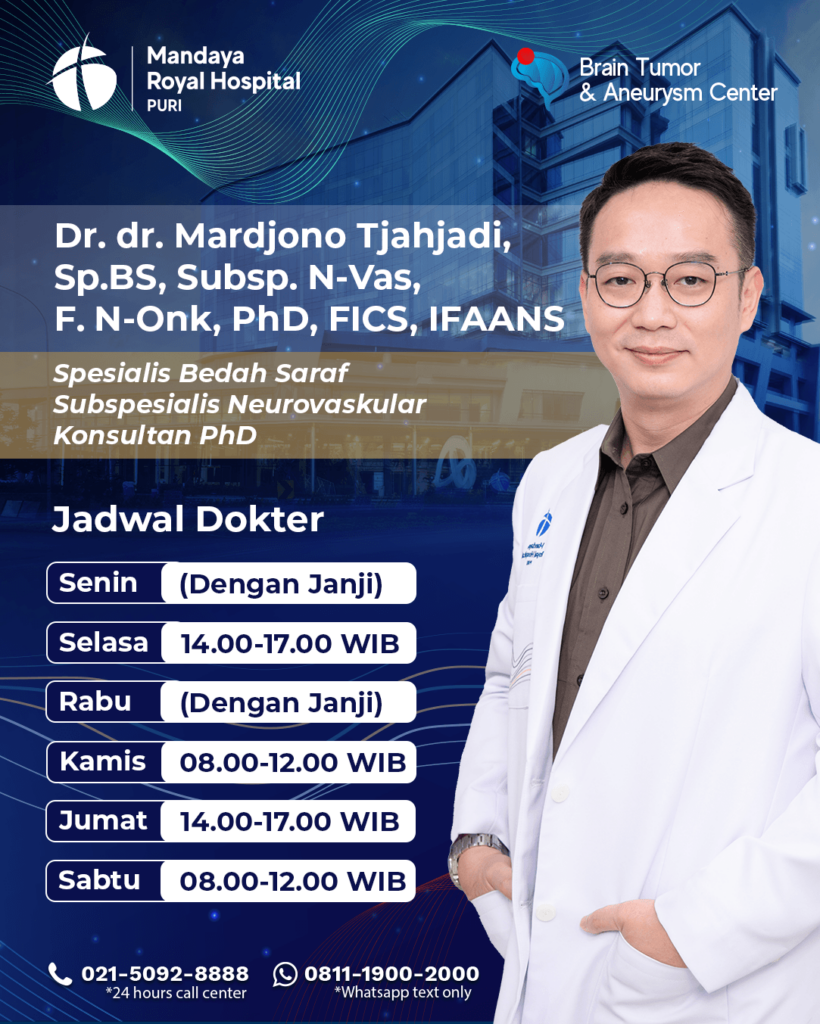
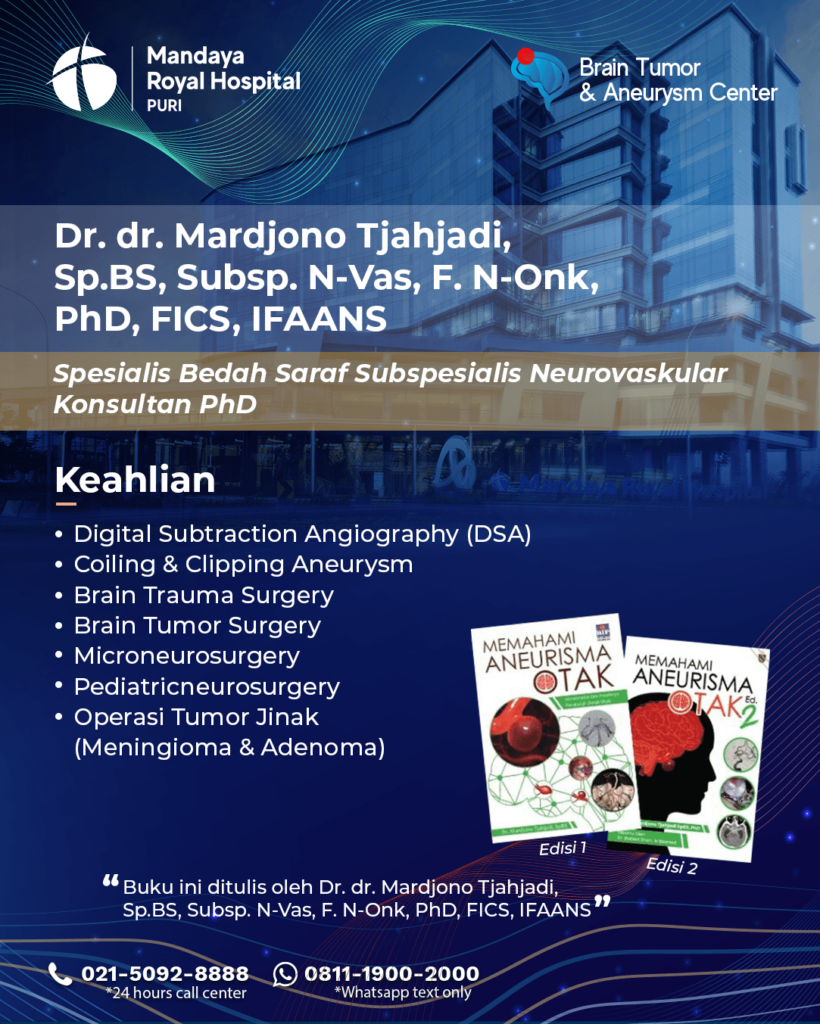
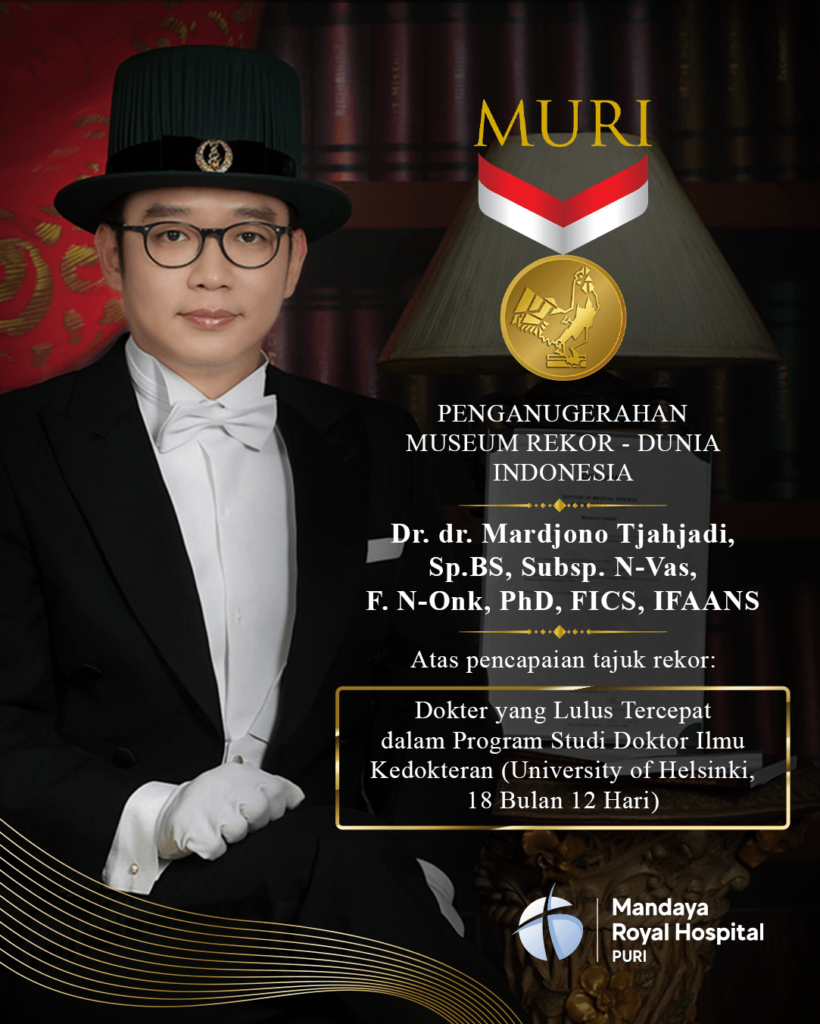
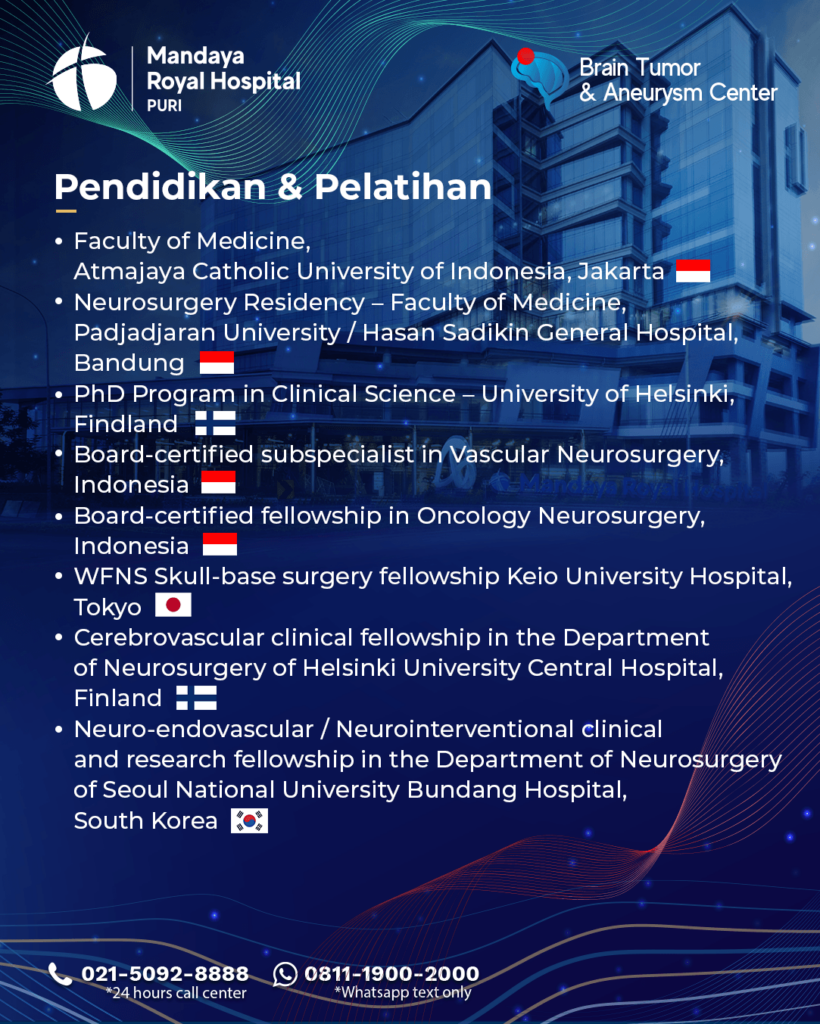
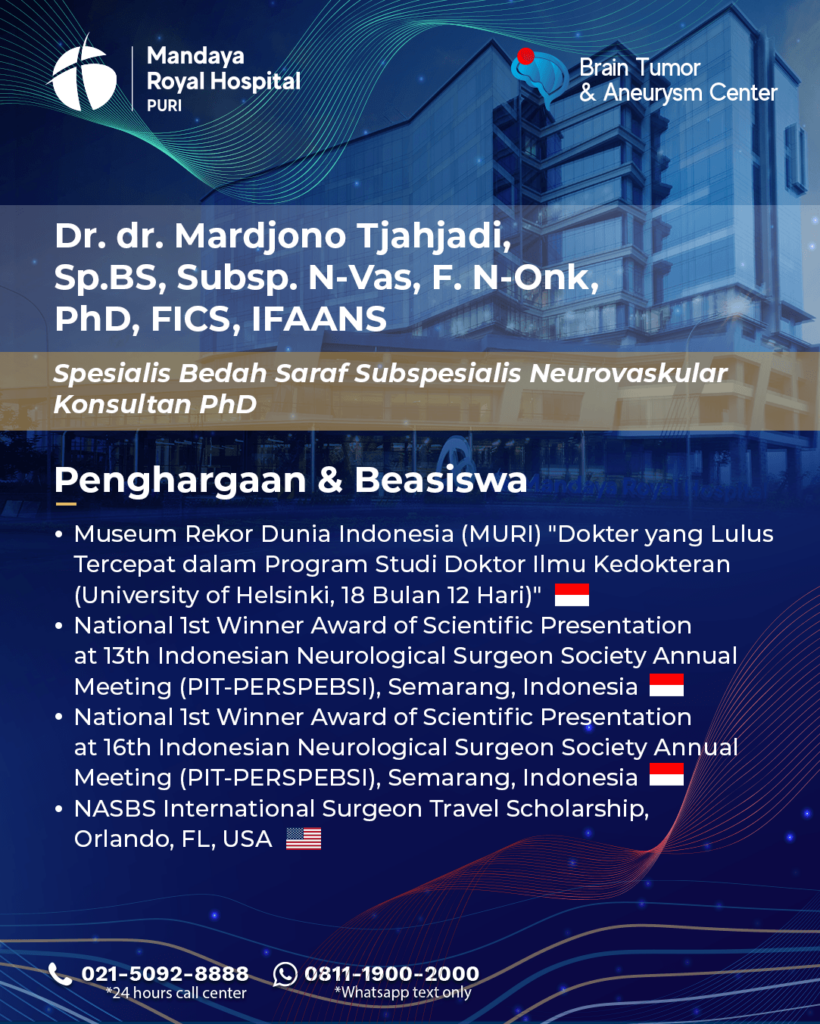
Brain aneurysm procedures at Mandaya Royal Hospital Puri are performed by Dr. Mardjono Tjahjadi, Sp.BS, Subsp. N-Vas, F. N-Onk, PhD, FICS, IFAANS, widely known as Dr. Joy.
He trained in brain aneurysm management at the University of Helsinki, Finland, under world-renowned neurosurgeon Prof. Juha Hernesniemi. Dr. Joy completed his doctoral degree in just 18 months and 12 days, earning a MURI record as “Indonesia’s Fastest Doctoral Graduate in Medicine.”
In addition to aneurysm treatment, Dr. Joy is also highly experienced in brain tumor surgery and is among the few doctors in Indonesia skilled in Awake Brain Surgery, a procedure where the patient remains conscious during brain surgery.
Dr. Joy’s consultation schedule at Mandaya Royal Hospital Puri:
- Monday: by appointment
- Tuesday: 2:00 – 5:00 PM
- Wednesday: by appointment
- Thursday: 8:00 AM – 12:00 PM
- Friday: 2:00 – 5:00 PM
- Saturday: 8:00 AM – 12:00 PM
To make your visit to Mandaya Puri Hospital easier, you can use the Chat feature via WhatsApp, the Book Appointment option, or the Care Dokter app, which can be downloaded from Google Play and the App Store. These tools help you manage your visit, check your queue number, and access complete information conveniently.



